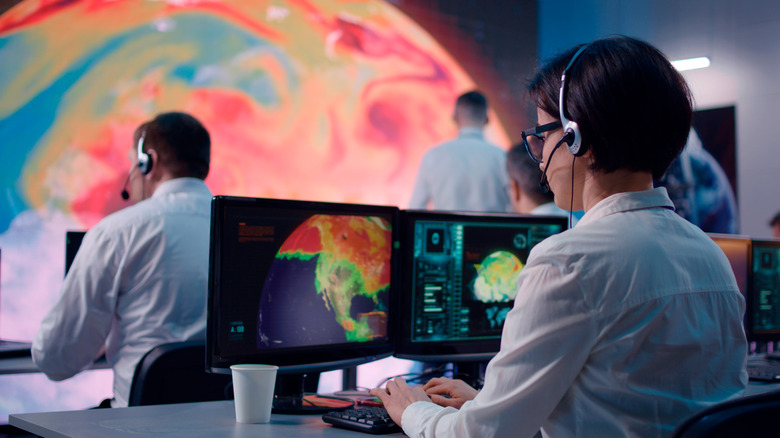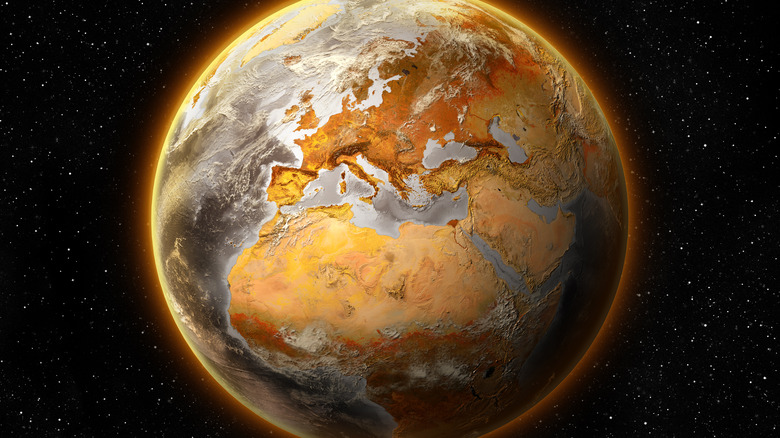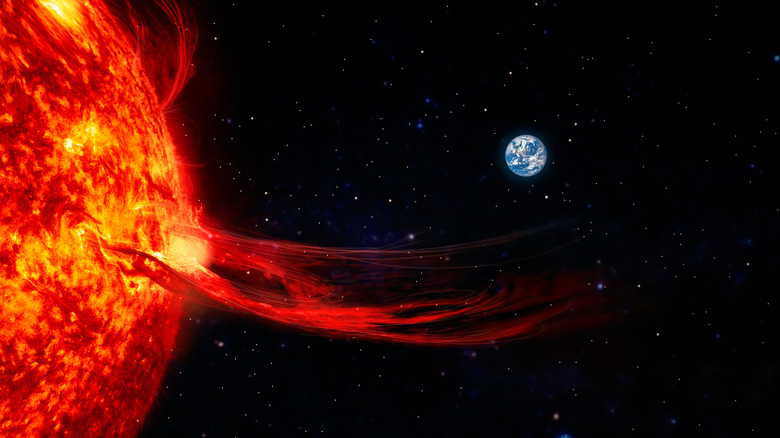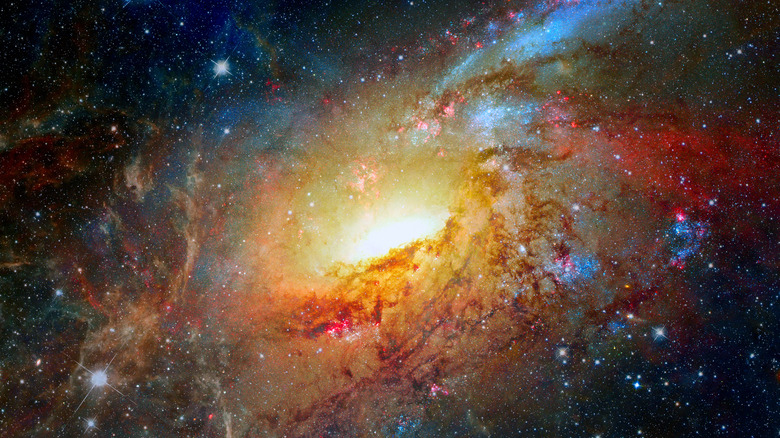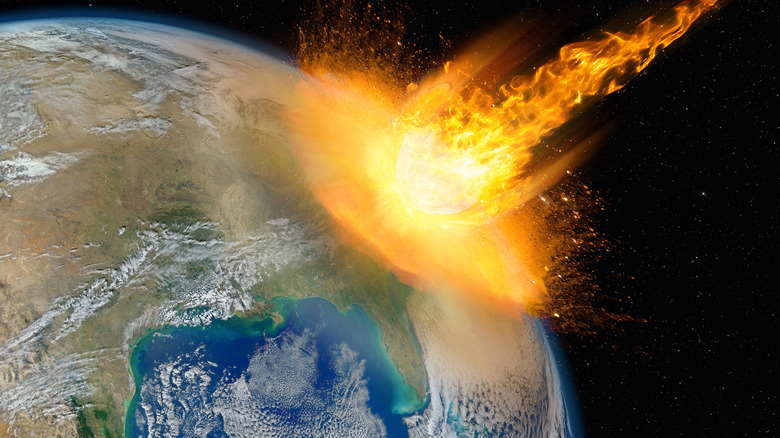The 5 Wildest Super Computer Predictions
Supercomputers are incredible machines used for a variety of tasks that include forecasting weather, exploring for oil, medical research, building nuclear fusion reactors, and physical simulations. Over the past few years, experts have turned to artificial intelligence programs to help them process data (via Tech Target). Other computers operate from neural networks that process information more like a human brain does using machine learning. With the right data, these systems become more accurate, per IBM.
Simulations can be particularly interesting, and that may be why nations like the United States and China are racing to develop faster supercomputers. Futurism reports that realistic modeling can help with a multitude of tasks that range from developing biofuels to predicting crime. And when we get to that point, it could be truly transformative for society. While we're not there just yet, some supercomputers have made some wild predictions about our world.
The end of the world
One of the earliest supercomputer predictions occurred in 1973, when computer engineer Jay Forrester developed a program called World One. The program was asked how well the world would fare at its current rate, considering factors like population growth, pollution, and natural resources (via Big Think). Unfortunately, the news wasn't good. The computer predicted that the quality of life on Earth would begin to decline by 2020.
In a video published by Australia's ABC News, a presenter explains that as the population increases, the quality of life diminishes. If we do nothing about it, "[T]he quality of life is going to go right back to practically zero." The program predicted that pollution alone would kill a significant portion of the population, dropping to numbers we haven't seen since 1900. At that rate, the computer estimated that "life as we know it on this planet will cease to exist" by 2040 to 2050 (via Big Think).
Mass extinction
More recently, scientists in Europe and Australia programmed another supercomputer to predict what the Earth might look like in the future. The program used synthetic models of the planet that contained different species, food sources, and climate models. It determined that the Earth is already experiencing its sixth mass extinction event. Not only that, most of the scenarios were directly related to climate change (via Phys.org).
The study, published in the journal Science, ran 100 simulations using different models that included climate and land changes from 2020 to 2100 and found that in roughly 70 years, literally thousands of plant and animal species will disappear due to co-extinctions. Professor Corey Bradshaw explains that when one species or plant becomes extinct, it leads to other species becoming extinct. Models predicted that by 2100, co-extinctions will rise 34% by the end of 2100, a percentage that would ultimately affect all living things, per Phys.org.
Solar storms
Experts know quite a bit about the sun and its cycles from more than 200 years of observation. For example, they know that it goes through sleep-wake cycles, and when it is "awake," there is a likelihood of more solar storms. When Earth experiences a solar storm, it is more likely to face extreme "space weather" or superstorms, according to a report published in the journal Geophysical Research Letters. These storms can impact the Earth by affecting power supplies, satellites, radio communications, and even social behavior.
Such an event occurred in 1859. Called the Carrington event, a solar storm disrupted telegraph systems worldwide, according to Space.com. Using historical data, scientists at the University of Warwick in the United Kingdom found that superstorms of varying intensity can occur every 25 years. They found that the likelihood of a severe superstorm occurred in 42 years out of 150 (about 28%) and a great (less damaging) superstorm was 6 years out of 150 (4%). Unfortunately, that's about as specific as they can get.
The sun will die
Scientists have also used computers to predict when the sun will die. The good news is that it's a long time from now. We're talking billions of years, and by then, humans will probably no longer inhabit the Earth. At 4.6 billion years old, the sun releases enough energy to keep itself and us alive, but at some point, gravity will cause it to collapse on itself (via Space.com).
The sun is currently in a phase that scientists call the "main sequence," and based on data, it is predicted that it may go out in about 5 billion years. Paolo Testa, an astrophysicist at the Center for Astrophysics, tells Livescience that our sun is "middle-aged." Scientists used the information they already know about stars and calculated that we have about five billion more years before the sun becomes unstable and consumes the planets in the solar system.
Asteroid impacts
Experts believe that the Earth was struck by an asteroid some 66 million years ago. The event caused several catastrophes that wiped out 75% of the creatures on the planet, including dinosaurs (via Live Science). Our moon is thought to be the result of an asteroid hitting our planet about 106 million years ago, so the probability of another asteroid colliding with Earth is likely. In fact, the Planetary Society reports that the odds of a large asteroid hitting Earth and causing massive damage is one in 100 every hundred years.
Analysis from the European Space Agency's Near Earth Object Coordination Center (NEOCC) shows that the asteroid 1950 DA, which is two-thirds of a mile across, will hit the Earth on March 16, 2880. According to Forbes, asteroid 1950 DA is capable of doing major damage. Another asteroid on NASA's radar causing concern is Bennu, a "potentially hazardous" asteroid that is about one-third of a mile wide. According to calculations, there is a one in 1,750 chance of striking Earth in the next 300 years, with the most likely chance of a collision occurring in the late 2100s and early 2200s, according to National Geographic.

